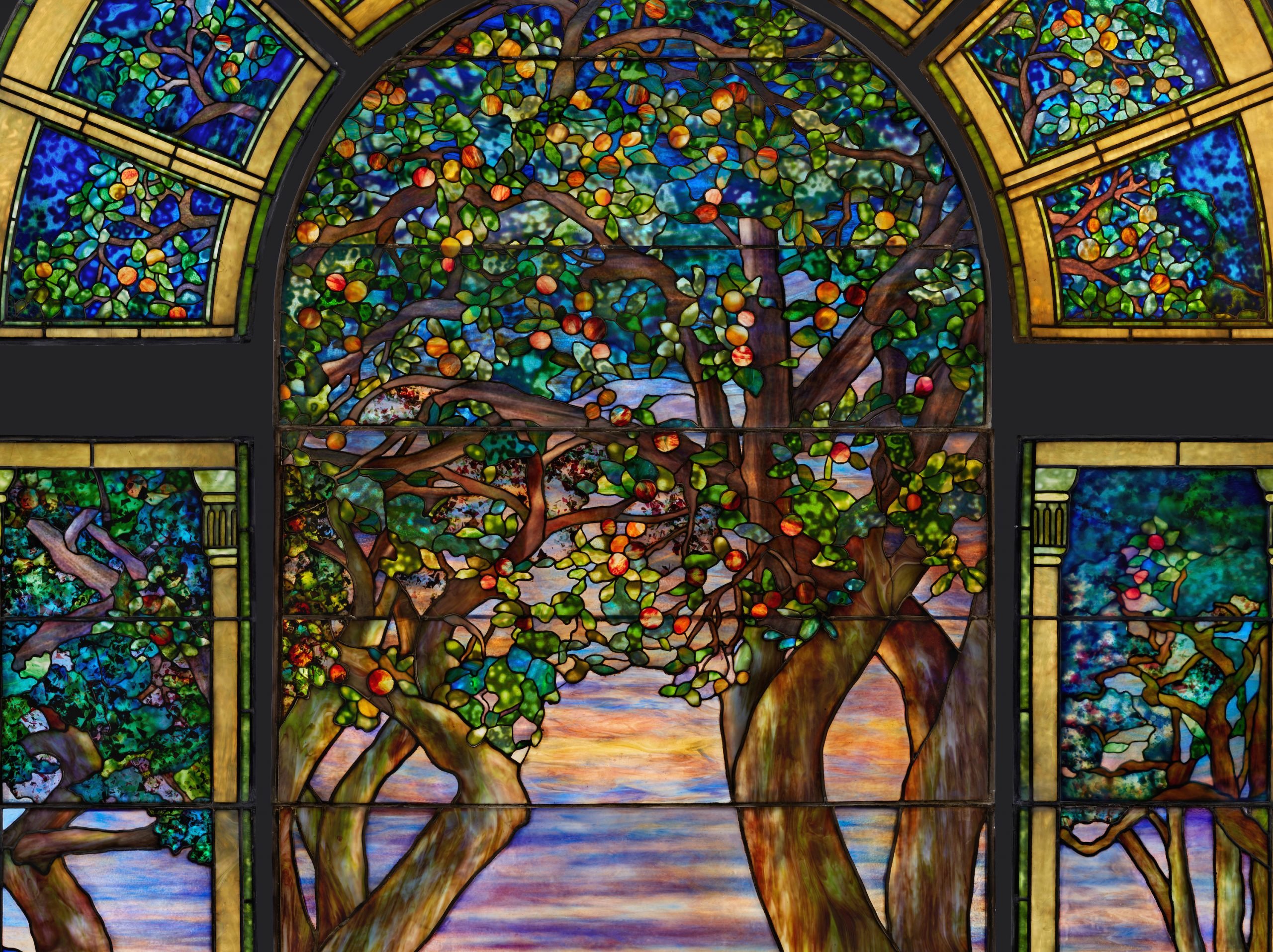
If the words “Tiffany window” bring to mind a bucolic scene teeming with iridescent flora, then it’s quite likely you’re thinking of Agnes Northrup’s craftsmanship.
Born to a family of educators in Queens, New York, Northrup studied at the Flushing Institute before finding work in the 1880s selecting and cutting glass as a so-called “Tiffany Girl.” She had greater ambitions. Although Louis Comfort Tiffany was a generous employer who offered women equal pay, in keeping with contemporary mores, he didn’t retain married women. Northrup, therefore, chose not to marry and rose steadily in a male-dominated field. By the 1890s, she’d been granted her own studio from which she would file patents for her designs.
Her most personal commission arrived in 1903, when Northrop designed a memorial window for her father, Allen Northrop, at the Reformed Church of Flushing where the family had been congregants for decades. It centers on a ripe orange tree that stands before a lush valley. Up above, through a thick canopy leaves and flowers, rests the heavenly city. It’s a design Northrop would luxuriously expand upon a decade later when commissioned to create a window for the First Baptist Church in Canton, Ohio.
Louis Comfort Tiffany & Agnes Northrup, Danner Memorial Window (1913). Photo: Sotheby’s.
Dedicated in 1913, the Danner Memorial Window (named for John and Terressa Danner’s 50 years of service to the church) evidences Northrop and Tiffany at the peak of their powers. It’s a sunset scene that depicts a cluster of fruit trees on the banks of a meandering river. In the foreground, poppies catch the last of the day’s light; beyond, the sky is streaked with bruises.
This window is set to appear at Sotheby’s Modern Evening Auction on November 18, where it is estimated to command prices between $5 million and $7 million. If so, it would set a new record for a Tiffany window, breaking the $1.9 million its current owner Alan Gerry paid for the piece at Christie’s in 2000.
“By the 1910s, Tiffany Studios had become world renowned for their innovative stained-glass techniques and design achievements,” Jodi Pollack said via email, noting that the company’s patented Favrile glass made in its own glasshouse offered it broad creative freedom. “Tiffany and Northrop were leveraging the qualities of their own Favrile glass to achieve the same painterly effects of light as the great impressionist painters of their time.”
A detail from the “Danner Memorial Window”. Photo: courtesy Sotheby’s.
Accordingly, at Sotheby’s, the Danner Memorial Window is being presented alongside period paintings and sculpture, making it the first time a major Tiffany work has arrived at a fine art evening sale. And it makes some sense for Northrup’s meticulous design to be presented alongside the likes of Claude Monet and Paul Signac, “one could say they were painting in glass,” Pollack said.
Admittedly, the window’s novel place in an Evening Auction is largely down to stock. Quality Tiffany windows rarely come to market (most being affixed to church walls), though one such work is Garden Landscape (1912), a three-part window recently acquired by the Metropolitan Museum of Art that is set to be installed this November in its American Wing. Sotheby’s has called the timing “momentous.”